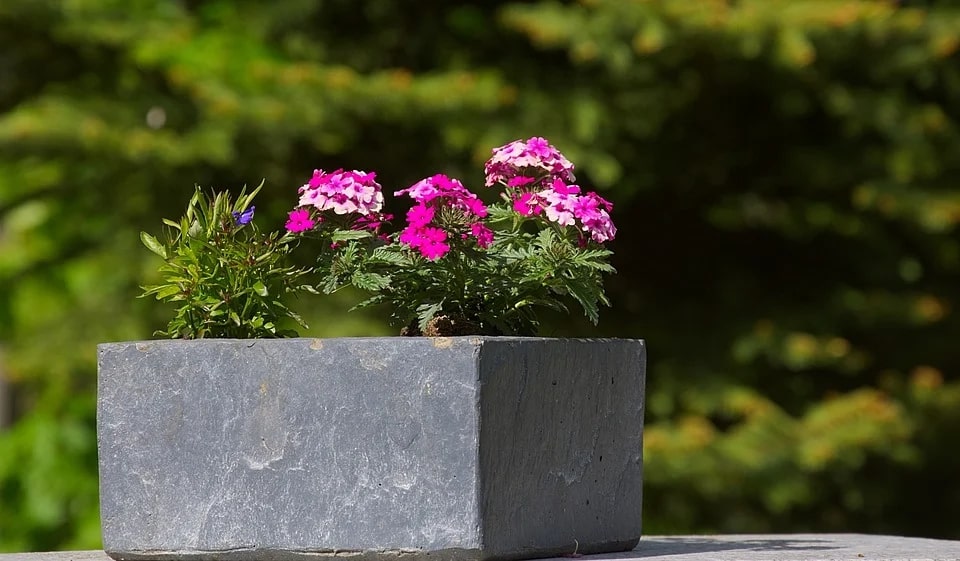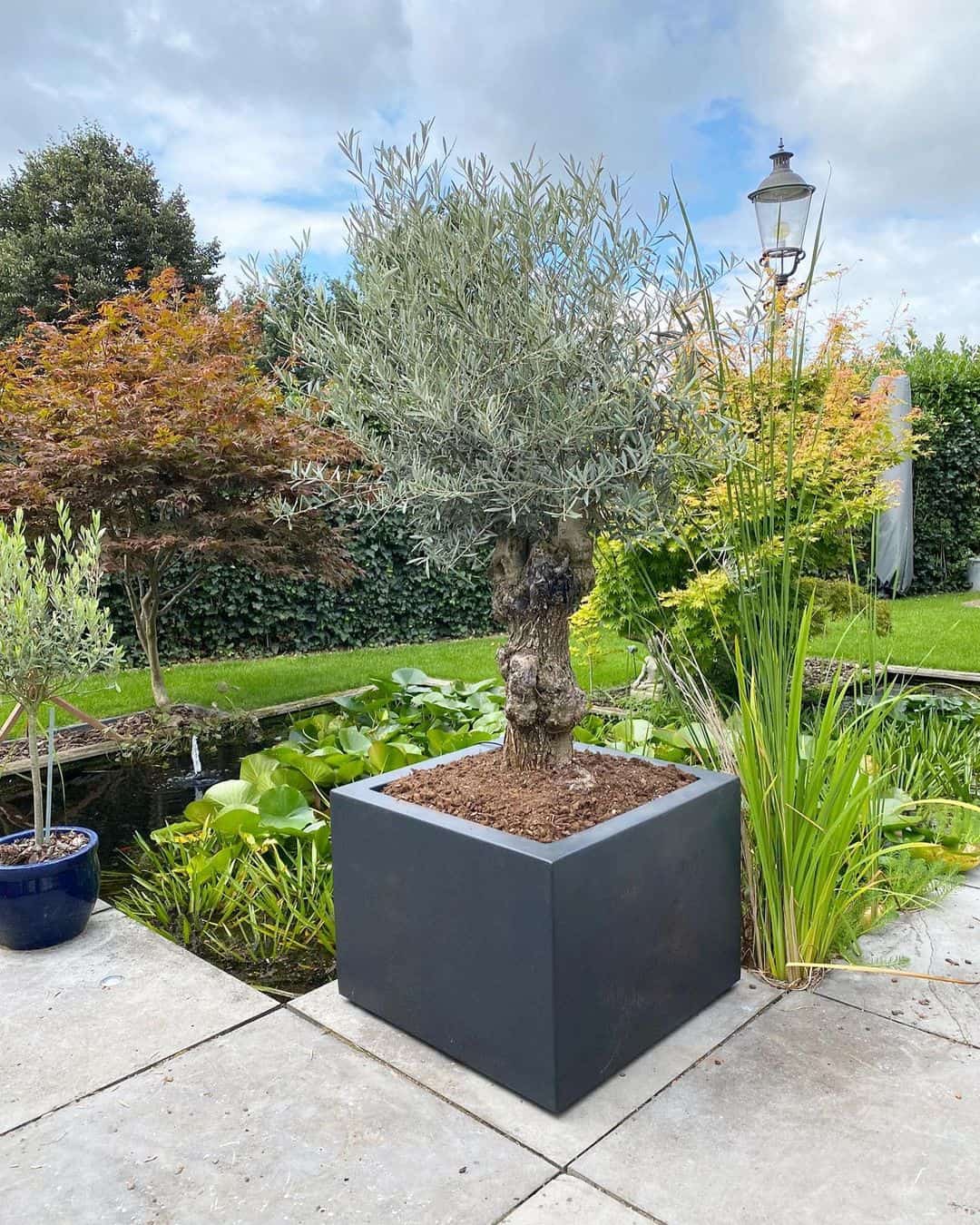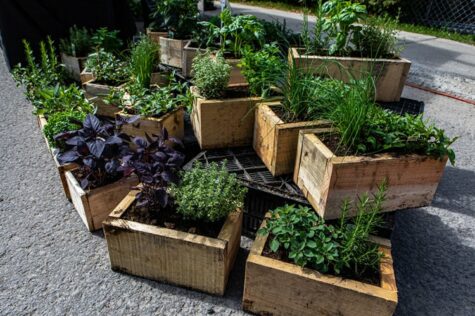Are you thinking of creating your own concrete planter? DIY projects such as these can be great fun for the whole family.
Whether you want to entertain your children in the garden or just do something nice for yourself, making a concrete planter can be a great boost in confidence.
Ready to get started? Here’s what you need to know to make your own concrete planter.

What you’ll need to make a DIY concrete planter box
As with any project, you require a few supplies and tools to get the job done. If you’re wondering exactly what you’ll need to build your own concrete planter, take a look at the list below:
Tools
- Shovel
- Gloves
- Mixing container
- Hosepipe or bucket with water
- Trowel
Supplies
- Two boxes (one smaller than the other)
- Concrete
- Non-stick cooking spray
- Duct tape
- Something heavy (for placing inside of the small box)
How to make a concrete planter
Once you have all your tools and supplies ready, it is time to start your project. Here’s what to do:
Step 1: Create the mould
How difficult or easy it will be to create your mould is dependant on the size of your planter. If you want to make a large concrete planter, you will need a very sturdy mould to accommodate the weight of the cement. For that reason, you’ll need strong wooden moulds.
If you’re planning on building a medium to small-sized planter, you can get away with using strong carton boxes as a mould.
In this article, we won’t be getting into the building of a large mould so let’s take a look at how to use carton boxes.
First, you will need two boxes that fit inside each other with about a 2.54 – 5.08cm (1-2-inch) gap between them. Keep in mind that concrete is quite heavy and making the gap bigger than 2 inches can affect the strength of your mould, leading to a warped planter. Leaving a gap of less than 1 inch will mean the concrete becomes quite fragile.
You can, of course, also use other containers like plastic boxes as moulds, just make sure the same size gap applies if you do.
Line the inside of your mould with duct tape. Make sure to create a small overlap and try to keep the overlap the same every time. Once the inside of the box is fully lined, making it waterproof, you can start to wrap the smaller box in duct tape as well. Again make sure there is a small overlap and that the whole box is wrapped on all sides and the bottom only leaving the top open.
To create a drainage hole, use duct tape to secure one or two toilet rolls to the middle of the bottom. Make sure to cut them off at around 5.08cm (2 inches) since you don’t want your bottom to be any thicker than that. Once taped on, make sure there is no way for the cement to get into the toilet rolls.
Your mould is now ready.
Step 2: Prepare the cement

Credit: Shutterstock
How the cement is prepared will depend on the kind of cement you opted to use. To make it easier for yourself, I would suggest using a premixed cement mix. These only require that you add water to the mix. Other cement mixtures can become quite complicated when it comes to adding the right amount of sand.
If you went for premixed cement, then you will need a bucket to mix the cement in, either a shovel or a trowel to use for mixing and some rubber gloves to protect your hands.
Start by adding the desired amount of concrete into the bucket. Slowly add water while you mix the dry powder with the water. Stop adding water as soon as your cement has the consistency of cake mix. It should be wet and only slightly runny.
Keep in mind that the instructions will differ depending on the brand you choose so be sure to read the instructions on the pack if available. Once your cement is ready, it is time to put your mould to good use.
Step 3: Fill the mould
Before you start to pour cement into your mould, make sure it is sufficiently greased. The easiest way to do this is to cover the inside of the mould with non-stick cooking spray. Make sure every corner is sprayed with a thick layer of cooking oil. This will prevent the cement from sticking to the mould which makes taking it out easier later on.
Cover the bottom of your mould with about a 5.08cm (2-inches) layer of cement. Make sure it doesn’t go into the drainage holes that you created. You can add the cement by scooping it into the mould with a trowel. Make sure your mould is on a level surface to get an even bottom.
Once the bottom is covered, tap the sides of the mould to remove any air trapped in the cement and create a smooth surface.
Now you can diligently spray the smaller box with cooking oil to prevent the cement from sticking to it. Place this box on top of your bottom layer and make sure there is at least a 3.8 cm (1.5-inch) gap on all sides. Once in place, fill the inside box with something heavy like a container of sand, bricks or rocks. This should keep it in place during the next step.
Once your smaller box is in place, use the trowel to scoop cement into the 3.8cm (1.5 inch) gap between the boxes. Once it is filled to just below the edge of the box, tap the sides again to help the cement settle in place. You might need to add a bit more cement as the air bubbles that are released allow it to settle deeper.
Once ready, cover the top of the mould with cling wrap or something similar to prevent moisture from evaporating too quickly while the cement hardens. You might have to leave your mould to dry anywhere between 1 to 4 days. The drying period will depend on the cement you used so make sure to read the instructions carefully.
Step 4: Remove the planter from the mould
Once your cement is set and dry, it is time to extract your newly created planter from its mould. To do this, first, remove all the heavy things from the inside box. Wiggle the inside box around a bit and pull it out. It should come out quite easily if you sprayed enough oil on the outer surface.
Now you can either destroy the outside box to get the planter out or simply tip it out by turning the whole thing upside down. The outside box should also come away quite easily due to being greased so well.
Step 5: Decorate your planter
If your planter has any rough edges where the mould didn’t create a smooth finish, you can correct this problem by using some sandpaper and elbow grease. Simply sand away any sharp edges and make sure the drainage holes are open.
Once done, you can either leave your mould as is and use it for planting, or you can decorate it. To decorate your mould, simply paint it as you please. You either paint it one colour or draw some intricate patterns. Just keep in mind that this planter will be heavy so ask help to move it before planting in it.
Now all that’s left to do is to fill your planter with soil and the plants of your choice.
FAQs
How thick does a concrete planter need to be?
The thickness of your planter will depend on how big your planter is. For large concrete planters, a minimum of 5.08 (2 inches) is recommended. For smaller concrete planters you can get away with as little as 2.54cm (1 inch) or less.
Is it cheaper to make your own concrete planter?
Making your own planters is usually much more cost-effective than buying them. Buying the required materials is usually much cheaper than buying the finished product. You may also be able to reuse the mould, making future planters even cheaper to make.
What can I use in the bottom of a planter for drainage?
To improve drainage, it is advised to put coarse material in the bottom of your planter. These materials can include gravel, stones, plastic bottles, broken glass, broken tiles or wood chips.

Save this pin for later






